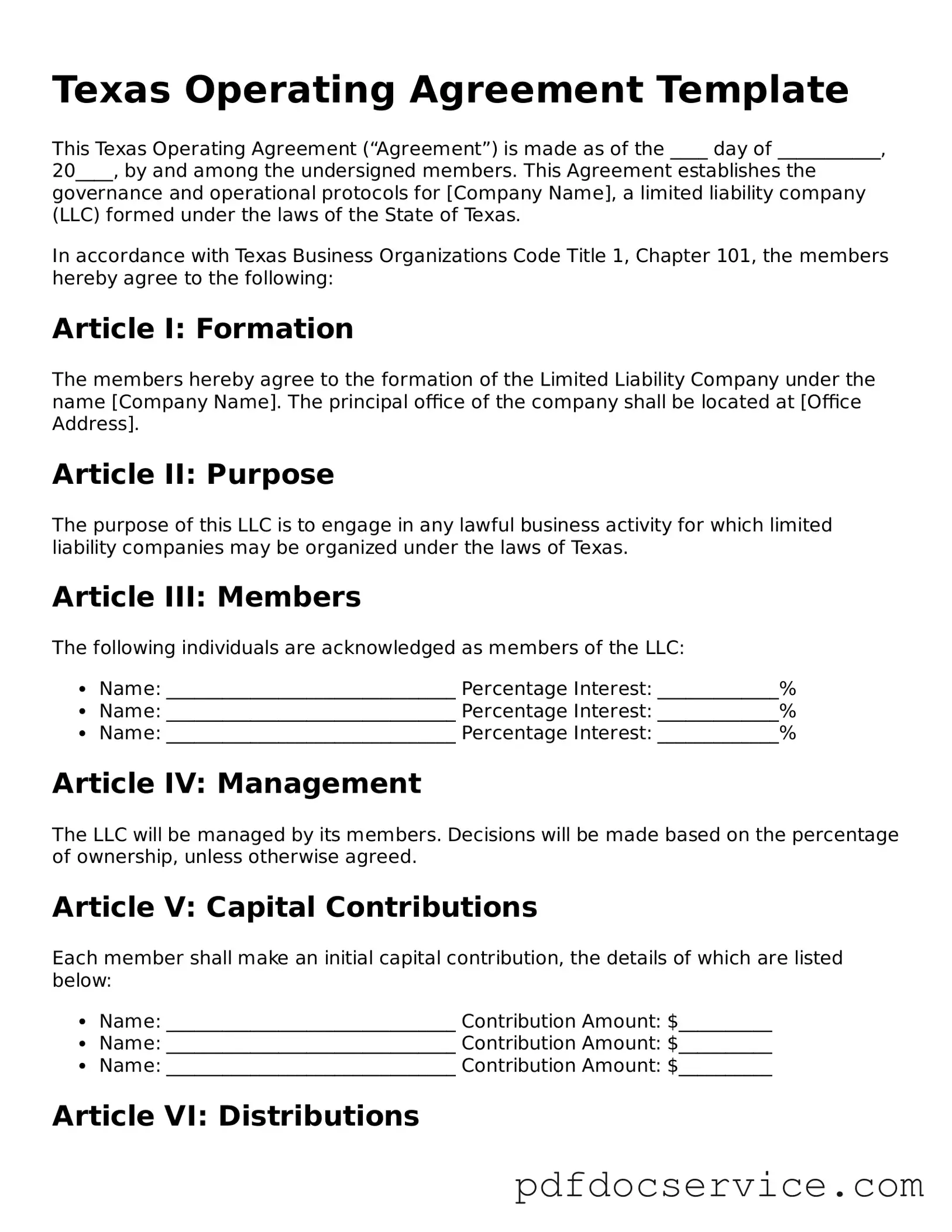What is a Texas Operating Agreement?
A Texas Operating Agreement is a legal document that outlines the management structure and operating procedures of a limited liability company (LLC) in Texas. This agreement serves as a roadmap for how the business will be run and helps to clarify the rights and responsibilities of its members. It is not required by law but is highly recommended to prevent disputes and ensure smooth operations.
Why do I need an Operating Agreement for my LLC?
Having an Operating Agreement is crucial for several reasons:
-
It helps define the management structure of your LLC.
-
The document outlines each member's financial contributions and profit-sharing ratios.
-
It provides a clear plan for resolving disputes among members.
-
It protects your limited liability status by demonstrating that your LLC is a separate entity.
Who should draft the Operating Agreement?
While you can draft the Operating Agreement yourself, it is often beneficial to consult with a legal professional who specializes in business law. An attorney can ensure that the document complies with Texas laws and adequately addresses the specific needs of your LLC.
What should be included in the Operating Agreement?
Typically, a Texas Operating Agreement should include:
-
The name and purpose of the LLC.
-
The names and addresses of the members.
-
The management structure (member-managed or manager-managed).
-
Details on capital contributions and ownership percentages.
-
Procedures for adding new members or handling member departures.
-
Dispute resolution methods.
-
How profits and losses will be distributed.
Can I change the Operating Agreement after it is created?
Yes, you can modify your Operating Agreement at any time, provided that all members agree to the changes. It is advisable to document any amendments in writing and have all members sign the revised agreement to maintain clarity and prevent misunderstandings.
Is the Operating Agreement filed with the state?
No, the Operating Agreement is not filed with the state of Texas. It is an internal document that remains with the members of the LLC. However, it is important to keep it accessible for reference and to provide it to banks or investors if needed.
What happens if I don’t have an Operating Agreement?
If you do not have an Operating Agreement, Texas law will govern your LLC's operations. This means that your LLC will default to the state’s standard rules, which may not align with your intentions. Without a clear agreement, disputes may arise, and the resolution process could be more complicated and less favorable for the members.
How often should I review the Operating Agreement?
It is a good practice to review your Operating Agreement annually or whenever there are significant changes in your business, such as adding new members or altering the management structure. Regular reviews ensure that the document remains relevant and accurately reflects the current state of your LLC.
Where can I find a template for a Texas Operating Agreement?
Templates for Texas Operating Agreements can be found online through various legal websites or business resources. However, while templates can provide a helpful starting point, it is wise to customize the agreement to fit your specific circumstances. Consulting with a legal professional is recommended to ensure that all necessary provisions are included.
